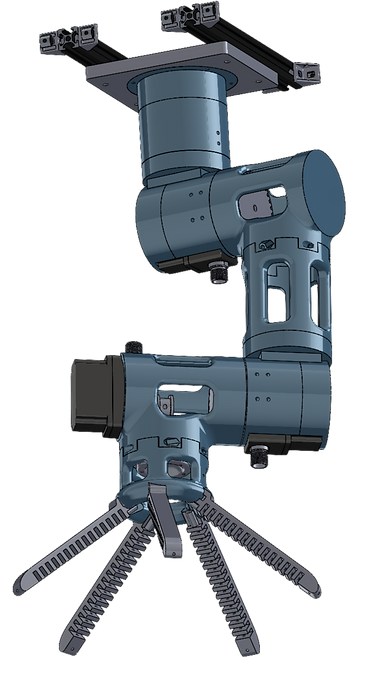
Mechanical
Left to right: Ryan Shaw, Dylan Leier, Lukas Schuler Desnoyers, Karan Salvadi, Allen Chen, John Mabbayad, Nate Katzer, Ryan Buch, Jaeden Rossner, Dani Mackay, Ben Muwanga, Evan Kappes
Not pictured: Abdullah Arif, Daniel Lu, Sam Bachnak, Harnoor Chugh, Jeffery Duong, Mahmoud Zaher, Matthew Ohlmann, William Kusuma, Zahidul Islam Bayzid, Ryan Adib, Tanner Knapton, Luke Kachura


Structures
The structure redesign improves on our prior AUV's suboptimal hydrodynamics, poor buoyancy, and overall size by adding an internal air pocket within a compact shell design. This updated design also significantly improves durability, as our previous design would frequently snap at critical stress points.
Battery Enclosure
To improve thermal management and serviceability of Ogopogo, we relocated the batteries from the center of the control enclosure to an external, custom-machined aluminum enclosure. This results in simpler distribution of power to future enclosures, increased heat transfer and significantly more space within the control enclosure.


Electronics Tray
The electronics tray was completely redesigned with vertical mounts and custom snap-fit clips, exposing more modules per layer to simplify maintenance and upgrades. An aluminum tray runs through the hull and is connected to the end-cap to increase heat transfer outside of the control enclosure.
Gripper
Ogopogo’s gripper arm was originally a 3-axis design that utilized bio-inspired gecko fingers, however this has been reduced to 2 axes for Robosub 2025 to allow for easier integration.


Torpedo
The torpedo design uses a spring-loaded launching system that operates by misaligning the torpedo fins with guide grooves and realigning them using a solenoid to fire. The torpedoes weight distribution is adjusted with variable infill in the head and fins, resulting in a maximum straight trajectory of 1 meter.